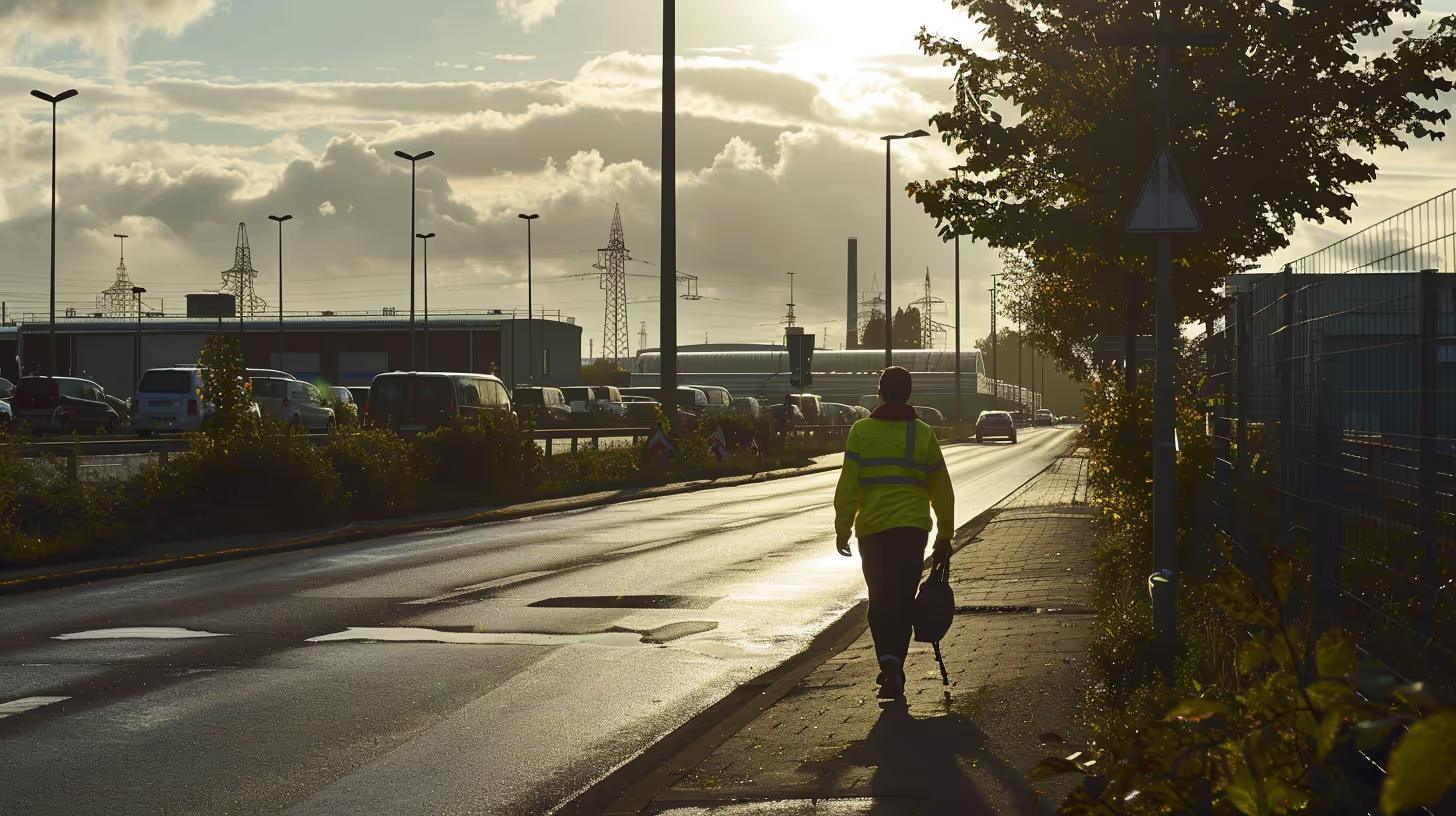Breaking Down Employee Transportation Barriers
.avif)
Reliable staff transportation is becoming a commonplace strategy for organizations around the world as a tool to ensure smooth operations and higher employee satisfaction. While transportation barriers can hurt attendance, productivity and retention, they don't necessarily need to be such a detriment to your business. This blog will guide you through the process of identifying common transportation barriers within your organization and offer practical suggestions to mitigate or overcome them.
Understanding Transportation Barriers
Transportation barriers can refer to any obstacle that might prevent or prohibit an employee from successfully commuting to work efficiently and safely. Addressing these barriers can help your organization maintain a productive workforce and drive productivity. Understanding that situations occur outside of your employees’ control, an organization that takes steps to identify and overcome these barriers is well-positioned for increased loyalty.
So What Are Some Common Transportation Barriers?
We have identified 6 key, yet common barriers to transportation that might hinder an employee's ability to travel to and from work:
Lack of Viable Public Transport Alternatives: More and more, we are seeing businesses moving operations to locations further afield. In many areas, public transit options are severely limited, if they exist at all; leaving employees without access to reliable means of commuting. This lack of a suitable alternative can force workers to rely on more expensive or inconvenient modes of transportation, which can significantly impact their ability to maintain consistent attendance or punctuality at work.

Inconvenient or Inflexible Schedules: Public transit timetables very rarely align with the varied shift patterns of many jobs, particularly those that operate outside of standard business hours. Inflexible timetables can leave employees facing long waits or even stranded; creating a severe inability to manage work-life balance effectively.
High Cost of Transportation: The growing expense of commuting can be a great burden on employees, particularly those on lower incomes. High costs associated with fuel, parking and public transit can make up a significant percentage of an employee's take-home earnings, impacting their overall financial, physical and mental well-being.
Long Commute Times: Extended time spent traveling to and from work leads to decreased productivity and increased stress for many employees. Long commutes not only eat into personal time but also contribute to fatigue, which can have a knock-on on effect for job performance and quality of life.
Safety Concerns: Safety has always been a critical issue for many commuters; those traveling at night or through unsafe areas even more so. Concerns around the safety and security of certain transport options can actually deter employees from accepting jobs that require extensive travel.
Environmental Impact: Traditional commuting avenues can often contribute to environmental degradation through increased carbon emissions. We are seeing a growing number of employees who are concerned about their environmental footprint and seek greener alternatives as a way to mitigate their impact. However, sustainable commutes are not always available or practical, severely limiting an eco-conscious employee’s ability to commute.
Identifying Transportation Barriers within Your Company
Now that we’ve pinpointed some of the barriers, let’s explore how to identify these issues at their roots. How should a company approach uncovering the potential transportation challenges faced by their employees? Here are a few ideas to get started.
Conduct Employee Surveys to Gather Feedback
Gathering direct insight from your employees is essential to understanding their commuting pain points. Surveys should be designed to find out real information about their current commute and open the floor to suggestions for improvement. This could reveal common themes or specific issues surrounding some of the biggest transport-related challenges your employees are facing.
Analyze Existing Commuting Data
Explore the use of data analytics as a tool to understand employee commuting patterns and trends. Tools and technologies like AI and GIS mapping can be used alongside commute tracking software to help visualize and analyze this data; identifying geographic hotspots where transportation barriers are more commonplace.
Engage with Local Transportation Authorities
Partnering with local transit authorities to understand available resources and identifying route demand can help pave the way for potential modification, improvements or optimizations to existing services that could benefit your employee pool.
Review Company Policies & Benefits Around Commuting
Examine your company’s policies and benefits that pertain to your employee's daily commute, such as flexibility of working hours, remote or hybrid models and transportation subsidies. Identifying such gaps or finding areas for improvement in these policies can help alleviate some of the transportation challenges faced by your employees, leading to increased job satisfaction and productivity.
Strategies to Overcome Transportation Barriers
Various strategies can be implemented to tackle these barriers, ranging from providing dedicated shuttle services to promoting sustainable transportation options. Below are several approaches that can help organizations overcome transportation obstacles and create a more efficient and supportive work environment.
Implementing Staff Shuttle Services
Dedicated shuttle services can provide a reliable and efficient transportation solution for employees. With tailored shuttle programs comes the ability to customize routes and schedules to align with the needs of your workforce.

Learn more about Zeelo shuttle services and their impact on staff retention
Flexible Work Schedules & Remote Work
Offering flexible working hours can accommodate employees’ varying commute times, reducing stress and increasing productivity. Promoting flexibility and remote work options where feasible can support eliminating commuting challenges altogether.
Subsidizing Transportation Costs
Financial assistance for public transportation, such as subsidies or pre-tax commuter benefits programs, can alleviate the cost burden of commuting for employees; in turn making the daily commute a more affordable and attractive option.
Promoting Sustainable Transportation
Encouraging carpooling and ride-sharing among employees to facilitate a reduction in single occupancy vehicles on the road. Providing incentives for using bicycles or other environmentally friendly transportation models to promote sustainability at all levels of the business.
Measuring The Impact of Transportation Solutions
Set Key Performance Indicators (KPIs)
Establish KPIs to measure the success of newly implemented transportation initiatives. Consider tracking metrics such as attendance rates, productivity levels and employee satisfaction to evaluate the effectiveness of your solutions.
Continuous Feedback & Improvement
Encourage ongoing and consistent feedback from your employees to ensure that your transportation solutions remain effective and relevant. Regularly review and adjust your program strategies based on feedback to continuously improve how your employees can commute.
Addressing staff transportation barriers is essential for maintaining a productive and satisfied workforce. By proactively identifying and overcoming these barriers, companies can enhance employee attendance, productivity, and retention. The long-term benefits of improved staff transportation extend beyond individual employees to positively impact overall company success.
By following these guidelines, companies can effectively identify and overcome staff transportation barriers, leading to a more productive and satisfied workforce.
We’d love to hear about your experiences and challenges with staff transportation. Share your stories and suggestions with us. For expert assistance in improving your company’s staff transportation solutions, contact Zeelo today.
We help companies and schools achieve their transportation program goals
Corporate shuttles


Warehouse/Distribution


Schools & Universities


Become a partner


Want to know how we can help you?











.avif)
.avif)
